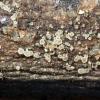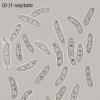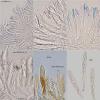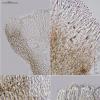
16-01-2026 00:45
Ethan CrensonHi all, On decorticated hardwood from a New York

10-01-2026 20:00
Tom SchrierHi all,We found picnidia on Protoparmeliopsis mur

13-01-2026 07:28
 Danny Newman
Danny Newman
Chlorociboria glauca on indet. decorticate logThe

08-12-2025 17:37
 Lothar Krieglsteiner
Lothar Krieglsteiner
20.6.25, on branch of Abies infected and thickened

15-01-2026 15:55
 Lothar Krieglsteiner
Lothar Krieglsteiner
this one is especially interesting for me because

13-01-2026 08:43
 Danny Newman
Danny Newman
Tricladium varicosporioides on indet. decorticate

07-01-2026 22:22
 Danny Newman
Danny Newman
Tatraea sp. on indet. hardwood The Swag, Great Sm

13-01-2026 09:10
 Danny Newman
Danny Newman
Dasyscyphella chrysotexta on indet. decorticate ha

13-01-2026 10:13
 Danny Newman
Danny Newman
Cordieritidaceae sp. on indet. wood w/ Hypoxylon s
This Mollisia grew on corticated branches of Cornus, 2 cm thick, lying on the ground. The apothecia are minute, coalescent, whitish, amber colour or grayish when old.
The ascospore are (0-)1-septate, even inside the living asci, arising from croziers, with an apical pore dirty red, rb, even after NH4OH-pret. (I didn't have KOH to do it).
The paraphyses, as the narrowly clavate marginal cells, have somewhat inconspicuous refractive VBs that stain in cresyl blue. Ectal excipulum with pale brownish textura angularis.
Do you have any ideas that might help me?

Bonjour Enrique,
The macro suggests that there would be a short stipe and the excipulum has some prismatica textura , at least under the margin. My first guess would go for a Calycina. Did you exclude this genus ?
Amitiés.
Michel
Non. Je n'exclude pas Calycina. Je pense que c'est une bonne alternative. Mais l'excípulum est formé par des cellules plutôt polygonales, seulement plus prismatiques vers les flancs de la fructification. Et en plus, tout l'excípulum possède pigmentation et pas seulement la partie la plus basale du même, comme il arrive habituellement en Calycina.

I would exclude Mollisia, because the shape of the vacuoles in the paraphyses does not fit Mollisia and also the spores bearing conidia is in my experience not known in Mollisia. The excipular structure doesn't fit well too.
Calycina would also be my first choice to search.
best regards,
Andreas


Do you have literature on Leptodontidium? For example the generic definition of the genus, Leptodontidium de Hoog, that seems to be in Taxon 28(4): 347 (1979)





